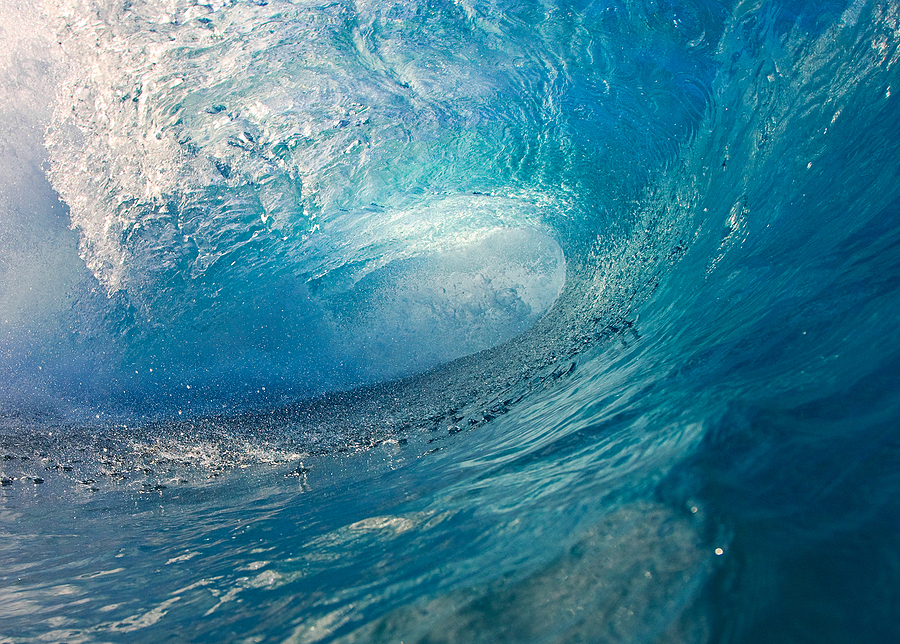Tidal Energy: What Exactly Is It & How Does One Harness It?

If we were to ask you: What are Earth’s most common natural resources? What would you say? If you said that it was energy, you are absolutely correct. It is the one element that can be found in every corner of Earth. In fact, this habitable planet is a huge ball of energy that is ready to be harnessed.
Fortunately, mankind has developed every way possible to harness whatever renewable energy we can. One of which is tidal energy. In fact, it is the oldest way of generating renewable energy. There are two ways to harness tidal energy: 1) Harnessing the tide’s potential energy and 2) harnessing the tide’s kinetic energy.
Before we delve deeper into the technical aspects of harnessing tidal energy, let us understand the physics behind tides and how they are formed.
What are tides?
Tides are periodic motions of water that occur as a result of the moon and sun’s gravitational force. The moon’s gravitational force causes the water to rise at the shores, resulting in what we call high tides. In addition to the inertia of Earth’s motion, the ocean’s bulge is limited by centrifugal force.
High tides occur when the distance between the moon and Earth is near, while low tides occur when the distance between the moon and Earth is far apart.
Types of tidal energy
Tidal energy is Earth’s oldest form of renewable energy. Unlike the other two oldest forms, wind and sunlight, there are two low and two high tides guaranteed every single day.
As mentioned earlier, there are two ways to harness tidal energy:
1. Harnessing the tide’s potential energy: When the water levels change due to tide changes, that process generates potential energy. This is why dams are constructed to harness it, capitalizing on the change in water level.
2. Harnessing the tide’s kinetic energy: Similar to harnessing wind energy, the tide’s kinetic energy can be harnessed by using a turbine setup. Because water is denser than air, the harnessed kinetic energy will also be higher. As a result, the blades of the turbine are significantly smaller than those of wind turbines, allowing them to operate even when the tides are not moving quickly.
How to harness tidal energy?
There are three ways tidal energy can be harnessed effectively.
Firstly, it is using tidal barrages. Marina barrage is a great example of a tidal barrage. It is a dam that taps on the potential energy generated by the change in tide level. The barrage’s gates are closed during high tide, resulting in water accumulating on the opposite end of the ocean. When the ocean level drops below the other end, the gates are opened, allowing the water to flow through the turbines out into the ocean. The flow of water through the turbines helps to generate electricity.
Secondly, it is using tidal stream systems. They are similar to wind turbines and are anchored underwater on the seabed, tapping on the kinetic energy generated by the water currents. The turbine’s blades are smaller and stronger than those of wind turbines, allowing them to withstand the significant pressures of the ocean depth. Tidal stream systems have been gaining popularity due to their affordability to set up and maintain. Additionally, the turbine’s blades are able to switch direction according to the direction the current is flowing.
Lastly, it is using tidal lagoons. They are similar to tidal barrages, except that these are highly specific and localized to a specific stretch of water. Tidal barrages are set up across the entire width of the estuary or river. However, tidal lagoons are structures that are confined to regions in the water that experience high tides. To put it simply, they are smaller-scale tidal barrages, blocking only a specific portion of the estuary or river.
Conclusion
While energy is all around us, we do not have the capability to harness everything with our current technology. With that being said, it is not as bad as it sounds. Nevertheless, the world of physics is indeed a promising landscape, full of potential for discovering the next big thing to help us harness renewable energy more efficiently and effectively.
If this sounds like something you would be interested in, then consider engaging Physics Tuition to help you grow in your fundamentals. We offer physics classes ranging from O-level and IP to IB and A-level programmes. Contact us today to find out more!